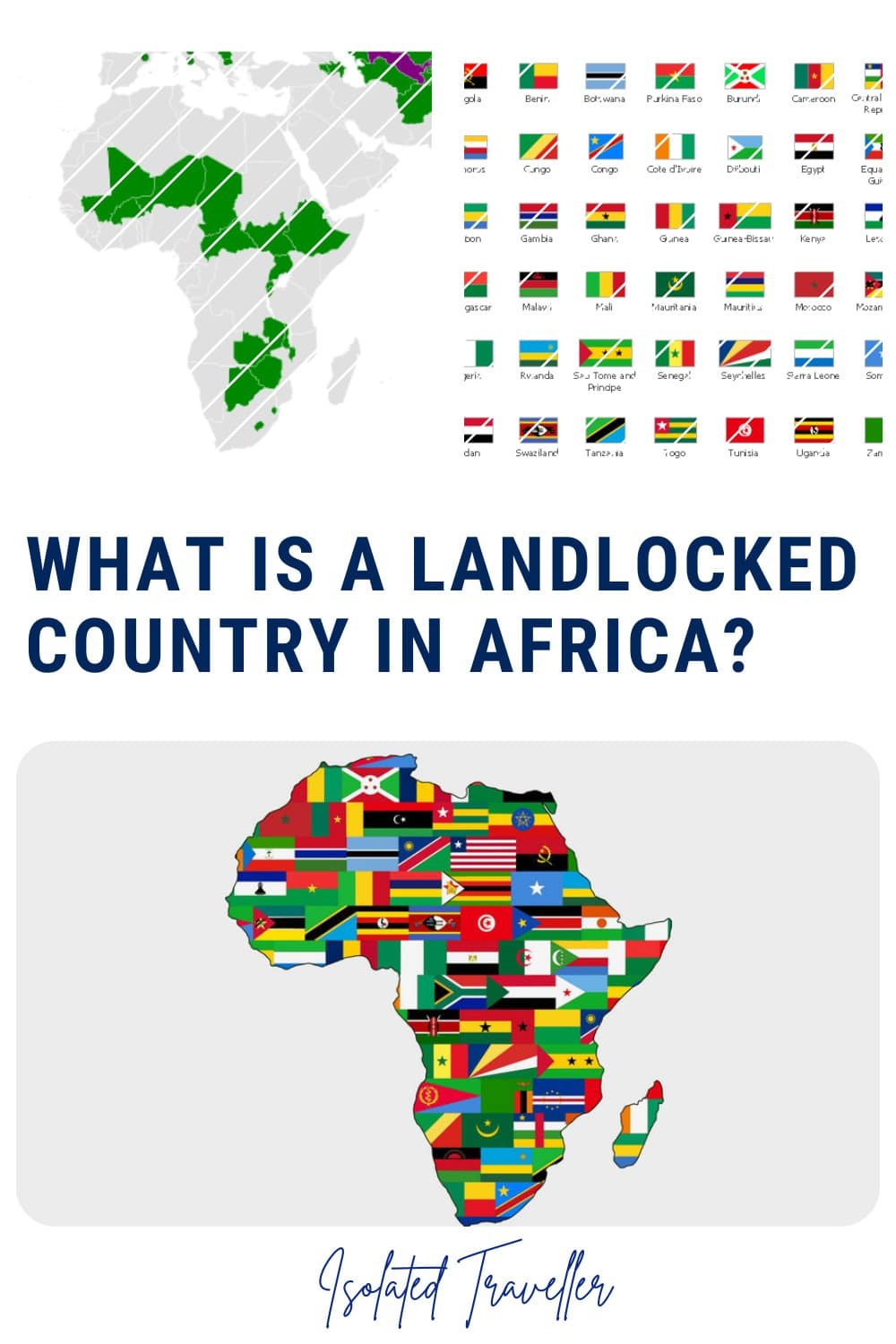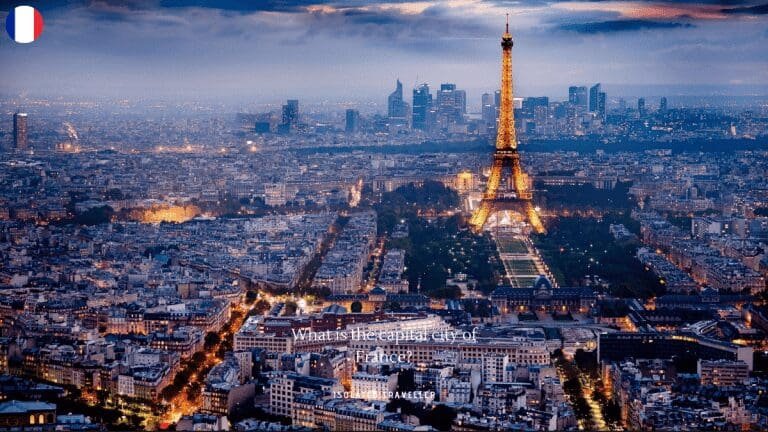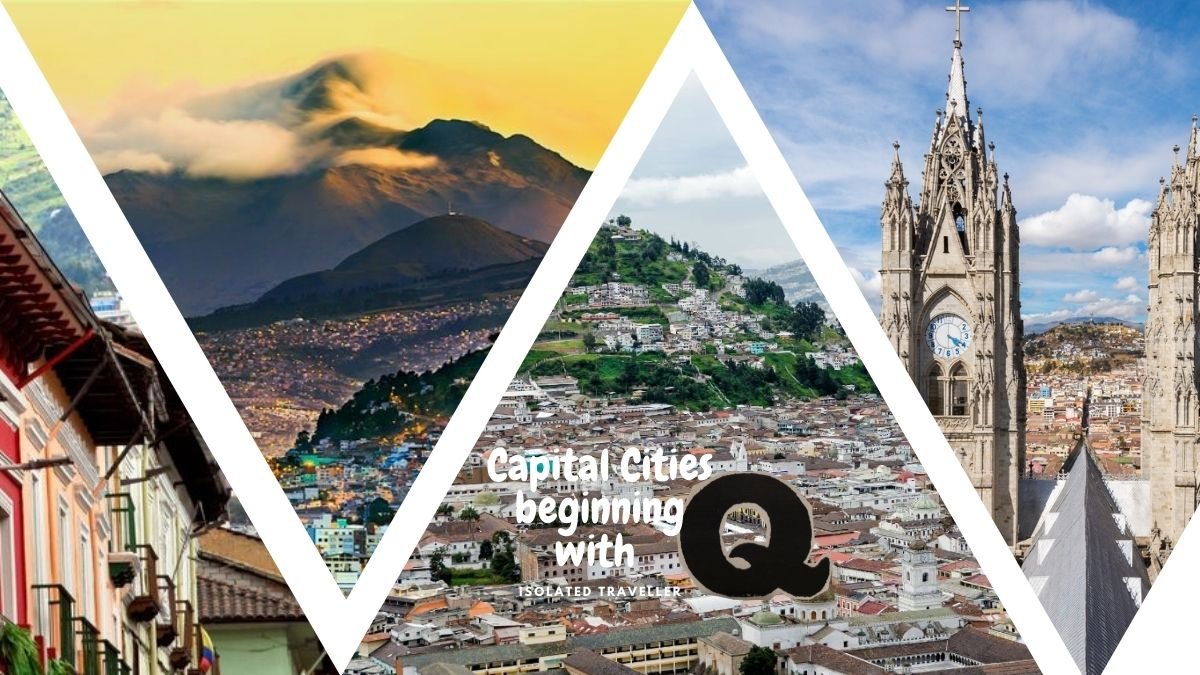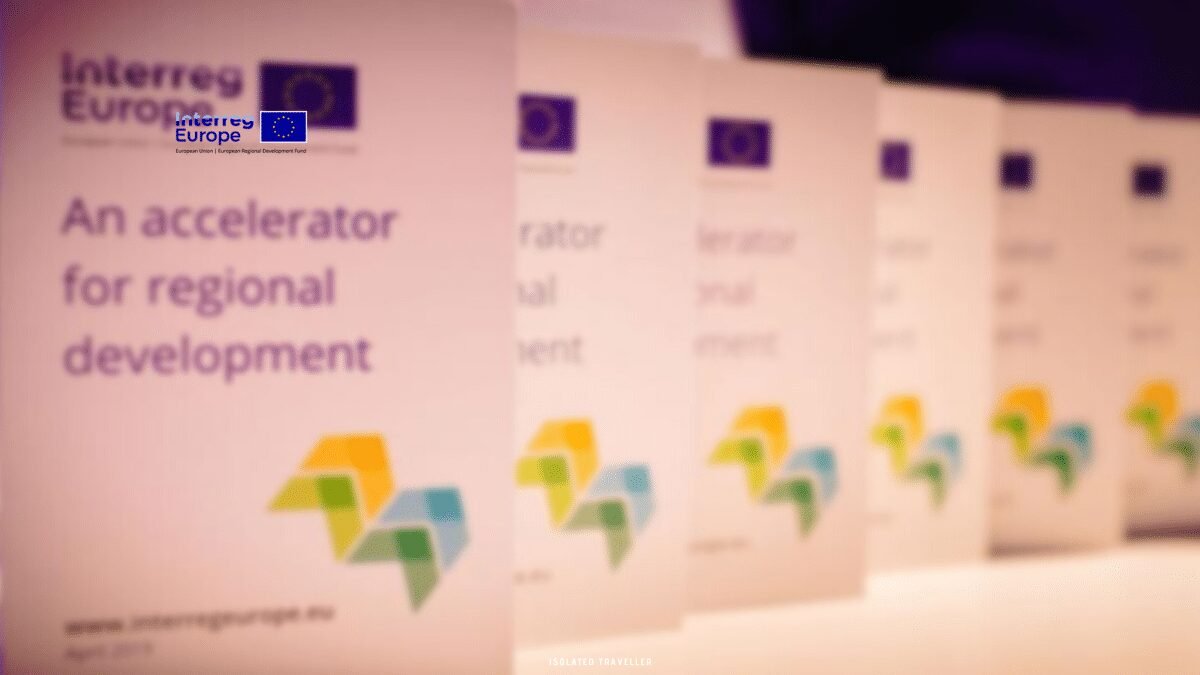What is a landlocked country in Africa?
A landlocked country is a country that is entirely surrounded by land and does not have a direct outlet to the sea. There are several landlocked countries in Africa, including:
- Burkina Faso
- Burundi
- Botswana
- Central African Republic
- Chad
- Eswatini
- Ethiopia
- Lesotho
- Malawi
- Mali
- Niger
- Rwanda
- South Sudan
- Uganda
- Zambia
- Zimbabwe
Landlocked countries often face challenges in terms of trade and transportation, as they do not have direct access to seaports. However, many landlocked countries have developed successful economies through trade with neighbouring countries and through the development of transportation infrastructures, such as roads and railways.
How Many Landlocked Countries are there in Africa?
There are 16 landlocked countries in Africa and Chad is the largest landlocked country in Africa, while Eswatini is the smallest.
Burkina Faso
Burkina Faso is a landlocked country located in West Africa. It is bordered by six countries, including Mali to the west, Niger to the north, and Benin to the east. The country has a population of around 20 million people and is known for its rich cultural heritage and diverse landscapes, which include savannas, forests, and mountains.
The official language of Burkina Faso is French, but many people also speak local languages such as Mòoré, Dioula, and Fula. The majority of the population practices Islam, but there are also significant Christian and traditional religious communities.
The economy of Burkina Faso is largely based on agriculture, with crops such as cotton, peanuts, and sorghum being major exports. The country is also rich in natural resources, including gold, manganese, and limestone.
Despite its rich natural resources and cultural heritage, Burkina Faso is one of the poorest countries in the world, with a high poverty rate and limited access to healthcare and education. However, the country has made significant progress in recent years in improving living standards and reducing poverty, and it is a member of the African Union and the Economic Community of West African States.
Burundi
Burundi is a landlocked country located in East Africa. It is bordered by Rwanda to the north, Tanzania to the east and south, and the Democratic Republic of the Congo to the west. The country has a population of around 11 million people and is known for its rich cultural heritage and diverse landscapes, which include savannas, forests, and mountains.
The official language of Burundi is Kirundi, but French is also widely spoken. The majority of the population practices Christianity, but there are also significant Muslim and traditional religious communities.
The economy of Burundi is largely based on agriculture, with crops such as coffee, tea, and cotton being major exports. The country is also rich in natural resources, including nickel, cobalt, and oil.
Despite its rich natural resources and cultural heritage, Burundi is one of the poorest countries in the world, with a high poverty rate and limited access to healthcare and education. The country has also been affected by conflict and political instability in recent years, and it is considered a fragile state by the World Bank. However, Burundi has made progress in recent years in improving living standards and reducing poverty, and it is a member of the African Union and the East African Community.
Botswana
Botswana is a landlocked country located in southern Africa. It is bordered by South Africa to the south and southeast, Namibia to the west, Zambia to the north, and Zimbabwe to the northeast. The country has a population of around 2.5 million people and is known for its rich natural resources and diverse landscapes, which include savannas, forests, and wetlands.
The official language of Botswana is English, but many people also speak local languages such as Setswana and Kalanga. The majority of the population practices Christianity, but there are also significant traditional religious communities.
The economy of Botswana is largely based on mining, with diamonds being the country’s main export. Botswana is also rich in other natural resources, including copper, nickel, and coal.
Despite its rich natural resources and strong economy, Botswana faces challenges such as high unemployment, particularly among young people, and limited access to healthcare and education in rural areas. However, the country has made significant progress in recent years in improving living standards and reducing poverty, and it is a member of the African Union and the Southern African Development Community
Central African Republic
The Central African Republic is a landlocked country located in central Africa. It is bordered by Cameroon to the west, Chad to the north, Sudan and South Sudan to the east, and the Democratic Republic of the Congo and the Republic of the Congo to the south. The country has a population of around 4.7 million people and is known for its rich natural resources and diverse landscapes, which include savannas, forests, and mountains.
The official language of the Central African Republic is French, but many people also speak local languages such as Sango and various African languages. The majority of the population practices Christianity, but there are also significant Muslim and traditional religious communities.
The economy of the Central African Republic is largely based on agriculture, with crops such as coffee, cotton, and tobacco being major exports. The country is also rich in natural resources, including diamonds, gold, and oil.
Despite its rich natural resources and diverse culture, the Central African Republic is one of the poorest countries in the world, with a high poverty rate and limited access to healthcare and education. The country has also been affected by conflict and political instability in recent years, and it is considered a fragile state by the World Bank. However, the Central African Republic has made progress in recent years in improving living standards and reducing poverty, and it is a member of the African Union and the Economic Community of Central African States.
Chad
Chad is a landlocked country located in central Africa. It is bordered by Libya to the north, Sudan to the east, the Central African Republic to the south, Cameroon and Nigeria to the southwest, and Niger to the west. The country has a population of around 15.5 million people and is known for its rich natural resources and diverse landscapes, which include savannas, forests, and mountains.
The official language of Chad is French, but many people also speak local languages such as Arabic and various African languages. The majority of the population practices Islam, but there are also significant Christian and traditional religious communities.
The economy of Chad is largely based on agriculture, with crops such as cotton, peanuts, and sorghum being major exports. The country is also rich in natural resources, including oil, uranium, and gold.
Despite its rich natural resources and diverse culture, Chad is one of the poorest countries in the world, with a high poverty rate and limited access to healthcare and education. The country has also been affected by conflict and political instability in recent years, and it is considered a fragile state by the World Bank. However, Chad has made progress in recent years in improving living standards and reducing poverty, and it is a member of the African Union and the Economic Community of Central African States.
Eswatini
Eswatini, also known as Swaziland, is a landlocked country located in southern Africa. It is completely surrounded by South Africa. The country has a population of around 1.1 million people and is known for its rich cultural heritage and diverse landscapes, which include savannas, forests, and mountains.
The official language of Eswatini is English, but many people also speak local languages such as SiSwati and Zulu. The majority of the population practices Christianity, but there are also significant traditional religious communities.
The economy of Eswatini is largely based on agriculture, with crops such as sugarcane, cotton, and tobacco being major exports. The country is also rich in natural resources, including coal, iron ore, and forests.
Despite its rich natural resources and diverse culture, Eswatini is one of the poorest countries in the world, with a high poverty rate and limited access to healthcare and education. The country has also been affected by conflict and political instability in recent years, and it is considered a fragile state by the World Bank. However, Eswatini has made progress in recent years in improving living standards and reducing poverty, and it is a member of the African Union and the Southern African Development Community.
Lesotho
Lesotho is a landlocked country located in southern Africa. It is completely surrounded by South Africa. The country has a population of around 2.2 million people and is known for its rich cultural heritage and diverse landscapes, which include savannas, forests, and mountains.
The official language of Lesotho is Sesotho, but many people also speak English and various African languages. The majority of the population practices Christianity, but there are also significant traditional religions communities.
The economy of Lesotho is largely based on agriculture, with crops such as corn, wheat, and beans being major exports. The country is also rich in natural resources, including diamonds, water, and timber.
Despite its rich natural resources and diverse culture, Lesotho is one of the poorest countries in the world, with a high poverty rate and limited access to healthcare and education. The country has also been affected by conflict and political instability in recent years, and it is considered a fragile state by the World Bank. However, Lesotho has made progress in recent years in improving living standards and reducing poverty, and it is a member of the African Union and the Southern African Development Community.
Malawi
Malawi is a landlocked country located in southeastern Africa. It is bordered by Mozambique to the east, Zambia to the west, and Tanzania to the north. The country has a population of around 19 million people and is known for its rich cultural heritage and diverse landscapes, which include savannas, forests, and mountains.
The official language of Malawi is English, but many people also speak local languages such as Chichewa and Yao. The majority of the population practices Christianity, but there are also significant Muslim and traditional religions communities.
The economy of Malawi is largely based on agriculture, with crops such as tobacco, tea, and sugarcane being major exports. The country is also rich in natural resources, including limestone, coal, and bauxite.
Despite its rich natural resources and diverse culture, Malawi is one of the poorest countries in the world, with a high poverty rate and limited access to healthcare and education. The country has also been affected by conflict and political instability in recent years, and it is considered a fragile state by the World Bank. However, Malawi has made progress in recent years in improving living standards and reducing poverty, and it is a member of the African Union and the Southern African Development Community.
Mali
Mali is a landlocked country located in West Africa. It is bordered by Algeria to the north, Niger to the east, Guinea to the south, Senegal and Mauritania to the west, and Burkina Faso to the southwest. The country has a population of around 20 million people and is known for its rich cultural heritage and diverse landscapes, which include savannas, forests, and mountains.
The official language of Mali is French, but many people also speak local languages such as Bambara, Peul, and Tamasheq. The majority of the population practices Islam, but there are also significant Christian and traditional religious communities.
The economy of Mali is largely based on agriculture, with crops such as cotton, peanuts, and sorghum being major exports. The country is also rich in natural resources, including gold, uranium, and salt.
Despite its rich natural resources and diverse culture, Mali is one of the poorest countries in the world, with a high poverty rate and limited access to healthcare and education. The country has also been affected by conflict and political instability in recent years, and it is considered a fragile state by the World Bank. However, Mali has made progress in recent years in improving living standards and reducing poverty, and it is a member of the African Union and the Economic Community of West African States.
Niger
Niger is a landlocked country located in West Africa. It is bordered by Algeria to the north, Libya to the northeast, Chad to the east, Nigeria and Benin to the south, and Burkina Faso and Mali to the west. The country has a population of around 24 million people and is known for its rich cultural heritage and diverse landscapes, which include savannas, forests, and mountains.
The official language of Niger is French, but many people also speak local languages such as Hausa, Zarma, and Kanuri. The majority of the population practices Islam, but there are also significant Christian and traditional religious communities.
The economy of Niger is largely based on agriculture, with crops such as cotton, peanuts, and millet being major exports. The country is also rich in natural resources, including uranium, coal, and oil.
Despite its rich natural resources and diverse culture, Niger is one of the poorest countries in the world, with a high poverty rate and limited access to healthcare and education. The country has also been affected by conflict and political instability in recent years, and it is considered a fragile state by the World Bank. However, Niger has made progress in recent years in improving living standards and reducing poverty, and it is a member of the African Union and the Economic Community of West African States.
Rwanda
Rwanda is a landlocked country located in East Africa. It is bordered by Uganda to the north, Tanzania to the east, Burundi to the south, and the Democratic Republic of the Congo to the west. The country has a population of around 12 million people and is known for its rich cultural heritage and diverse landscapes, which include savannas, forests, and mountains.
The official language of Rwanda is Kinyarwanda, but many people also speak English and French. The majority of the population practices Christianity, but there are also significant Muslim and traditional religious communities.
The economy of Rwanda is largely based on agriculture, with crops such as coffee, tea, and bananas being major exports. The country is also rich in natural resources, including minerals, oil, and natural gas.
Despite its rich natural resources and diverse culture, Rwanda is one of the poorest countries in the world, with a high poverty rate and limited access to healthcare and education. However, the country has made significant progress in recent years in improving living standards and reducing poverty, and it is a member of the African Union and the East African Community.
South Sudan
South Sudan is a landlocked country located in East Africa. It is bordered by Sudan to the north, Ethiopia to the east, Kenya to the southeast, Uganda to the south, the Democratic Republic of the Congo to the southwest, and the Central African Republic to the west. The country has a population of around 13 million people and is known for its rich natural resources and diverse landscapes, which include savannas, forests, and mountains.
The official language of South Sudan is English, but many people also speak local languages such as Dinka and Nuer. The majority of the population practices Christianity, but there are also significant Muslim and traditional religious communities.
The economy of South Sudan is largely based on agriculture, with crops such as sorghum, maize, and beans being major exports. The country is also rich in natural resources, including oil, timber, and minerals.
Despite its rich natural resources and diverse culture, South Sudan is one of the poorest countries in the world, with a high poverty rate and limited access to healthcare and education. The country has also been affected by conflict and political instability in recent years, and it is considered a fragile state by the World Bank. However, South Sudan has made progress in recent years in improving living standards and reducing poverty, and it is a member of the African Union and the Intergovernmental Authority on Development.
Uganda
Uganda is a landlocked country located in East Africa. It is bordered by South Sudan to the north, Kenya to the east, Tanzania to the south, Rwanda to the southwest, and the Democratic Republic of the Congo to the west. The country has a population of around 44 million people and is known for its rich cultural heritage and diverse landscapes, which include savannas, forests, and mountains.
The official language of Uganda is English, but many people also speak local languages such as Luganda and Swahili. The majority of the population practices Christianity, but there are also significant Muslim and traditional religious communities.
The economy of Uganda is largely based on agriculture, with crops such as coffee, tea, and tobacco being major exports. The country is also rich in natural resources, including oil, gold, and copper.
Despite its rich natural resources and diverse culture, Uganda is one of the poorest countries in the world, with a high poverty rate and limited access to healthcare and education. However, the country has made significant progress in recent years in improving living standards and reducing poverty, and it is a member of the African Union and the East African Community.
Zambia
Zambia is a landlocked country located in southern Africa. It is bordered by Tanzania to the north, Malawi and Mozambique to the east, Zimbabwe, Botswana, and Namibia to the south, and Angola to the west. The country has a population of around 18 million people and is known for its rich natural resources and diverse landscapes, which include savannas, forests, and mountains.
The official language of Zambia is English, but many people also speak local languages such as Bemba and Nyanja. The majority of the population practices Christianity, but there are also significant Muslim and traditional religions communities.
The economy of Zambia is largely based on mining, with copper being the country’s main export. Zambia is also rich in other natural resources, including cobalt, zinc, and coal.
Despite its rich natural resources and diverse culture, Zambia is one of the poorest countries in the world, with a high poverty rate and limited access to healthcare and education. However, the country has made significant progress in recent years in improving living standards and reducing poverty, and it is a member of the African Union and the Southern African Development Community.
Zimbabwe
Zimbabwe is a landlocked country located in southern Africa. It is bordered by South Africa to the south, Botswana to the west, Zambia to the north, and Mozambique to the east. The country has a population of around 14 million people and is known for its rich cultural heritage and diverse landscapes, which include savannas, forests, and mountains.
The official language of Zimbabwe is English, but many people also speak local languages such as Shona and Ndebele. The majority of the population practices Christianity, but there are also significant Muslim and traditional religions communities.
The economy of Zimbabwe is largely based on agriculture, with crops such as tobacco, cotton, and wheat being major exports. The country is also rich in natural resources, including gold, platinum, and diamonds.
Despite its rich natural resources and diverse culture, Zimbabwe is one of the poorest countries in the world, with a high poverty rate and limited access to healthcare and education. The country has also been affected by conflict and political instability in recent years, and it is considered a fragile state by the World Bank. However, Zimbabwe has made progress in recent years in improving living standards and reducing poverty, and it is a member of the African Union and the Southern African Development Community.








